Otters captivate us with their playful antics and charismatic personalities, but not all otters are the same. While river otters and sea otters might appear similar at first glance, these remarkable mammals have evolved distinct adaptations to thrive in their respective environments. From physical characteristics and habitat preferences to dietary habits and social behaviors, these two otter species have fascinating differences that reflect their unique ecological niches. This comprehensive comparison explores the key distinctions between river otters and sea otters, shedding light on what makes each of these beloved creatures special in their own right.
Taxonomy and Classification

River otters and sea otters belong to the same family, Mustelidae, which includes weasels, badgers, and wolverines. However, they diverge at the subfamily level. River otters are members of the Lutrinae subfamily and encompass several species worldwide, with the North American river otter (Lontra canadensis) being the most familiar in the United States and Canada. Sea otters, scientifically known as Enhydra lutris, represent their own genus within Lutrinae and are considered the most marine-adapted member of the mustelid family. This taxonomic distinction reflects their evolutionary path toward different lifestyles, with sea otters having diverged approximately 5 million years ago to adapt to a fully aquatic marine existence.
Physical Size and Appearance

One of the most noticeable differences between river otters and sea otters is their size. Sea otters are significantly larger, with adults typically weighing between 31-100 pounds (14-45 kg), making them the heaviest members of the mustelid family. Males can reach up to 4.5 feet (1.4 meters) in length. River otters are considerably smaller, weighing between 10-30 pounds (4.5-14 kg) and measuring 3-4 feet (0.9-1.2 meters) in length, including their tail. The visual distinction extends to their body shape as well—sea otters have a rounder, more robust appearance, while river otters display a more streamlined, elongated body designed for swift movement through water and on land. Their facial features also differ, with sea otters having broader, flatter faces compared to the more pointed, sleek profiles of river otters.
Habitat and Geographic Distribution
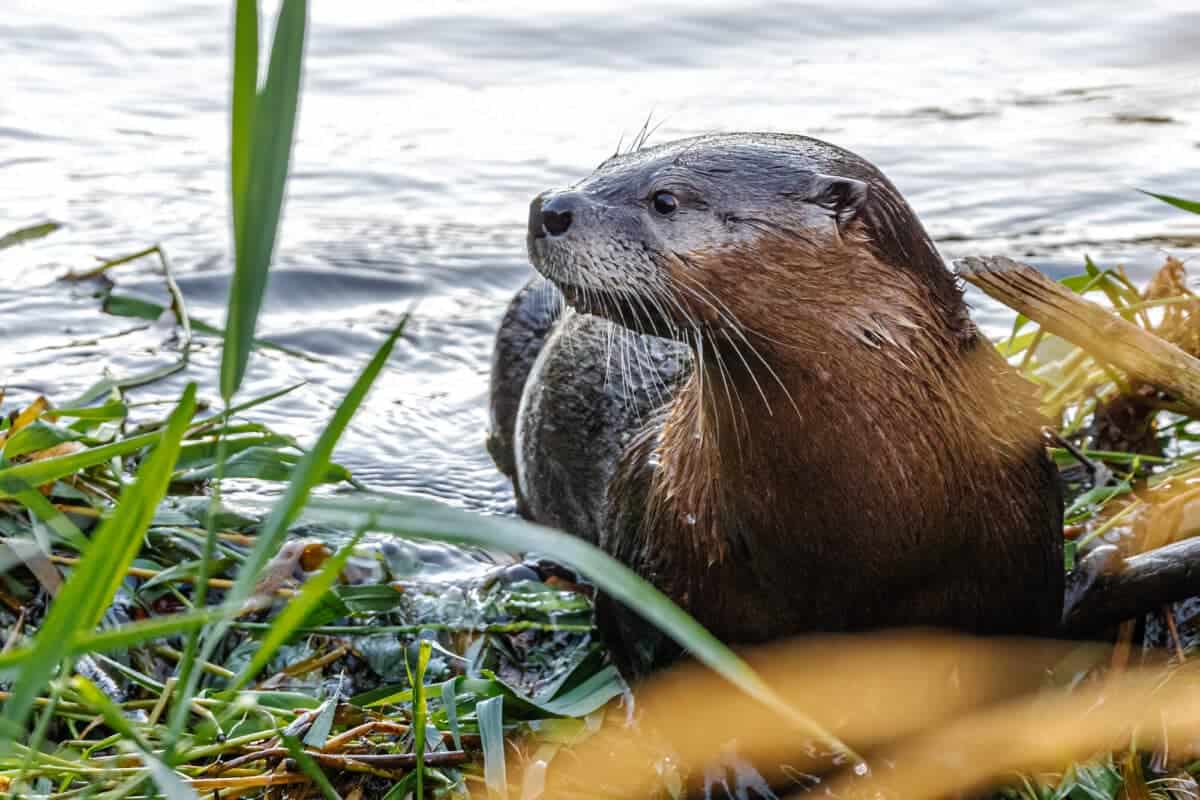
As their names suggest, these two otter species inhabit vastly different environments. River otters thrive in freshwater ecosystems, including rivers, streams, lakes, ponds, and marshes throughout North America, though some species can adapt to coastal environments and may venture into saltwater. They require healthy waterways with ample vegetation and denning sites along shorelines. In contrast, sea otters are exclusively marine mammals that inhabit coastal waters of the northern and eastern North Pacific Ocean, ranging from northern Japan to California. They rarely venture onto land, spending nearly their entire lives in ocean waters, typically staying within a mile of shore in kelp forest ecosystems. Sea otters prefer shallow coastal waters with rocky substrates where they can find abundant shellfish, their primary food source. This fundamental habitat difference has driven many of their other evolutionary adaptations.
Fur and Insulation Adaptations
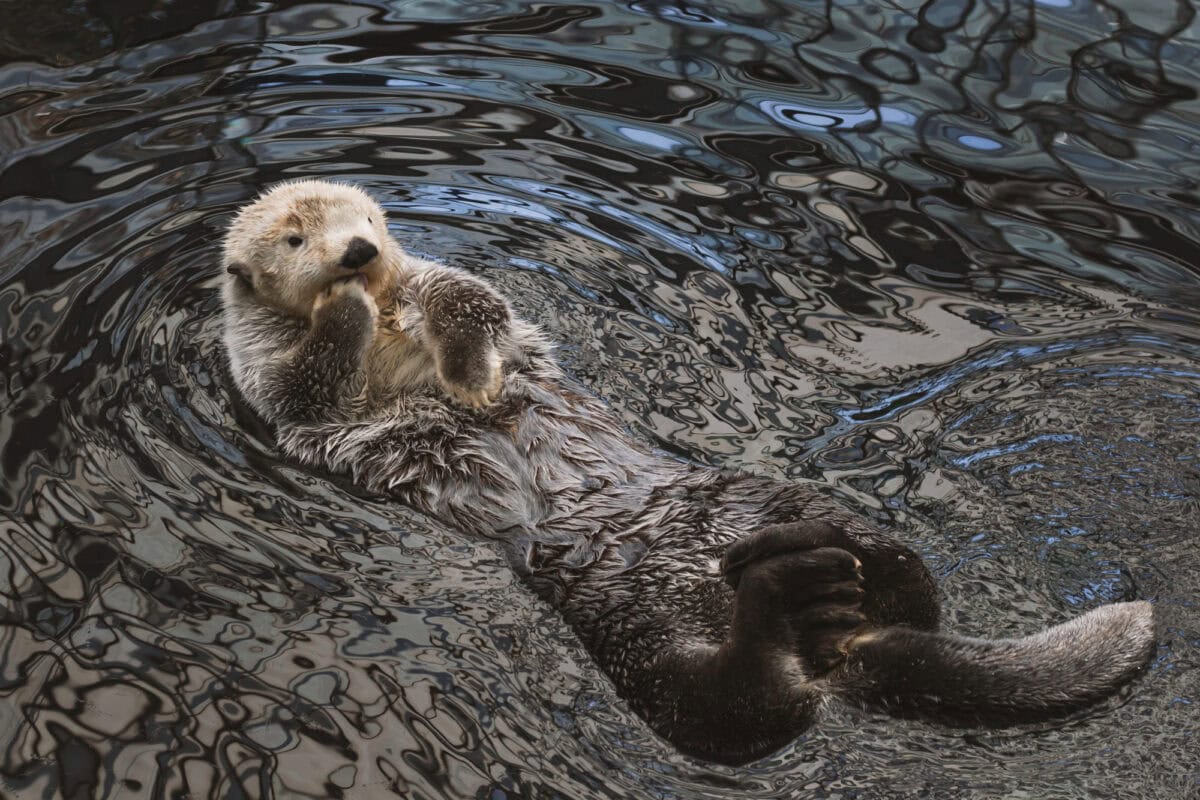
Both otter species possess incredibly dense fur, but sea otters take this adaptation to an extreme. Sea otters have the densest fur of any animal on Earth, with up to 1 million hairs per square inch. This extraordinary density is a crucial adaptation because, unlike river otters, sea otters lack the insulating blubber layer common to most marine mammals. Instead, they rely entirely on their fur for thermal regulation in cold ocean waters. Sea otters must meticulously groom their fur to maintain its insulating properties by trapping air bubbles close to their skin. River otters have dense fur as well, with approximately 300,000 hairs per square inch, but they also possess a thin layer of body fat that helps with insulation. Their fur consists of two layers: a waterproof outer guard layer and a soft, insulating undercoat. Both species must keep their fur clean to maintain its water-repellent and insulating qualities, but this maintenance is literally a matter of life and death for sea otters in their colder marine environment.
Swimming and Locomotion

The locomotion styles of river and sea otters reflect their different evolutionary paths and habitats. River otters are agile both in water and on land, capable of running at speeds up to 15 mph (24 km/h) on ground. When swimming, they propel themselves primarily with powerful kicks from their webbed hind feet while using their muscular tail as a rudder, achieving speeds of up to 8 mph (13 km/h) in water. They typically swim with their bodies submerged and only their heads above water. Sea otters, by contrast, are almost exclusively aquatic and move awkwardly on land. They swim using alternate strokes of their hind flippers while lying on their backs, a distinctive swimming posture rarely seen in other marine mammals. Their hind feet have evolved into flipper-like appendages that provide excellent propulsion in water but limited mobility on land. Sea otters also have retractable claws on their front paws, an adaptation that helps them handle prey items while floating on their backs.
Dietary Preferences and Feeding Habits

The diets of these two otter species reflect their different habitats and physical adaptations. River otters are opportunistic predators with a diverse diet that includes fish (their preferred prey), crayfish, frogs, turtles, insects, birds, and small mammals. They hunt actively, using their sensitive whiskers to detect prey movements in murky waters, and typically consume their catch on land or while swimming at the water’s surface. Sea otters are specialized predators that feed primarily on marine invertebrates, including sea urchins, mollusks, crustaceans, and some species of fish. Perhaps their most distinctive feeding behavior is the use of tools—sea otters are among the few mammal species known to use tools, often carrying a favorite rock in a pouch of loose skin under their forearm, which they use to crack open hard-shelled prey while floating on their backs. This specialized feeding technique allows them to access nutritious foods that would otherwise be protected by hard shells. Sea otters must consume approximately 25% of their body weight daily to maintain their high metabolic rate in cold waters, making them voracious feeders.
Reproductive Strategies and Pup Development
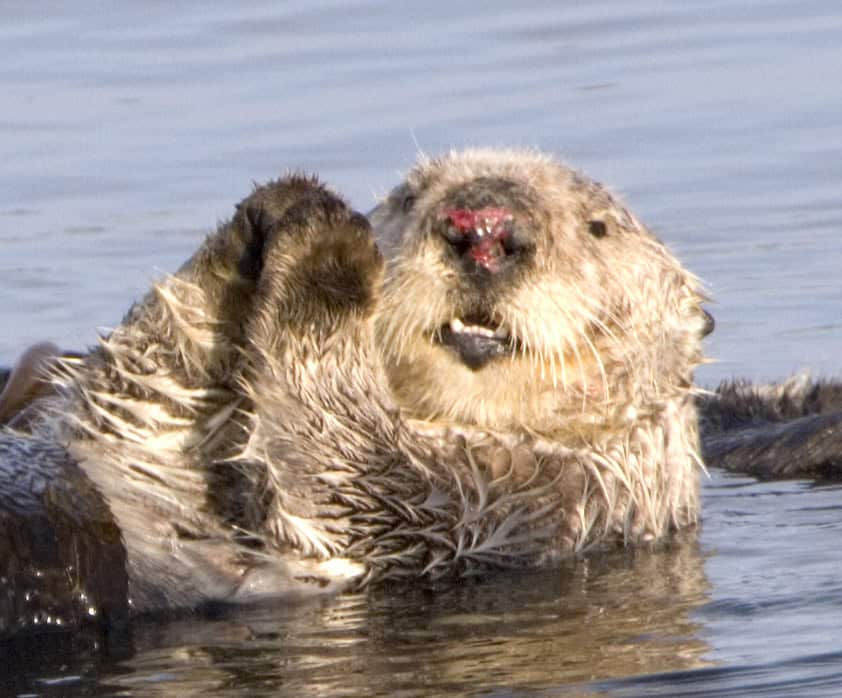
Both species show interesting differences in their reproductive biology. River otters typically mate in late winter or early spring, with females experiencing delayed implantation, meaning the fertilized egg doesn’t immediately implant in the uterine wall. This results in an actual gestation period of about 60-70 days, although the time from mating to birth can be 9-12 months. Female river otters give birth to 1-5 pups (typically 2-3) in dens located near water but on land. River otter pups are born blind and helpless, weighing only about 4-5 ounces (113-142 grams). Sea otters also exhibit delayed implantation, but their total pregnancy lasts 4-12 months with actual gestation taking about 4-5 months. They typically give birth to a single pup in the water. Sea otter pups are born relatively well-developed, with eyes open and a full coat of baby fur. They cannot swim at birth, so mothers care for them intensively, wrapping them in kelp to prevent them from floating away while the mother dives for food. This difference in litter size and pup development reflects their different lifestyles and the challenges of raising young in terrestrial versus marine environments.
Social Structure and Behavior

The social dynamics of river and sea otters differ considerably. River otters are generally more social, often living in family groups consisting of a mother and her offspring, sometimes accompanied by unrelated otters. Adult males may be solitary but frequently form bachelor groups outside the breeding season. They communicate through various vocalizations, scent marking, and physical interactions. Their playful behavior includes sliding down muddy or snowy banks, a behavior that serves both as play and efficient locomotion. Sea otters exhibit more variable social patterns depending on their geographic location. In California, male and female sea otters often live separately, with males forming large groups called “rafts” that can contain up to 100 individuals. In Alaska, mixed-sex rafts are more common. Sea otters often rest together in these groups, wrapping themselves in kelp to avoid drifting while sleeping. They’re frequently observed holding paws while sleeping, a behavior known as “rafting” that prevents them from drifting apart. This charming behavior, while seemingly affectionate, serves the practical purpose of keeping the group together during rest periods.
Adaptations for Diving

Both otter species are accomplished divers, but with different capabilities reflecting their habitats. River otters can stay submerged for 3-4 minutes and dive to depths of about 60 feet (18 meters), though most dives are much shorter and shallower. They have specialized muscles that close their ears and nostrils while underwater, and their heart rate slows during dives to conserve oxygen. Sea otters, as marine specialists, have more advanced diving adaptations. They can remain underwater for up to 5 minutes and dive to depths of 250 feet (76 meters), though most feeding dives are in the 30-60 foot (9-18 meter) range. Their lungs are twice the size expected for their body weight, allowing them to store more oxygen. Sea otters also have specialized blood chemistry with higher hemoglobin concentrations that enhances oxygen storage. Unlike river otters, sea otters rarely need to come onto land, as they’ve evolved to perform all life functions—including giving birth, mating, feeding, grooming, resting, and sleeping—while floating in ocean waters.
Ecological Roles and Importance
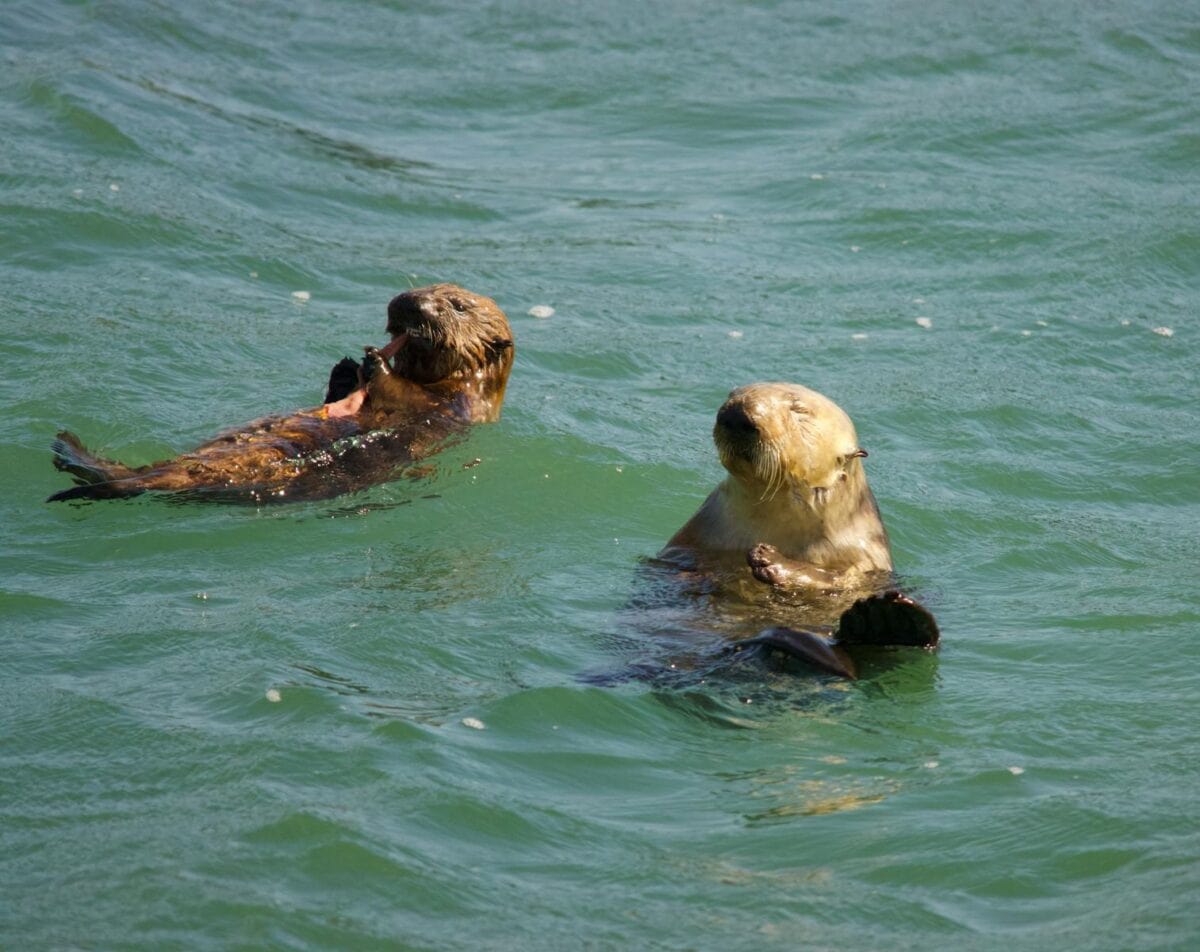
Both otter species play crucial roles as keystone species in their respective ecosystems, meaning their presence has disproportionately large effects on their environments. River otters serve as indicators of watershed health, as they require clean water and abundant food sources to thrive. Their predation helps regulate populations of fish and other prey species, contributing to balanced aquatic ecosystems. They also help oxygenate small streams through their swimming and diving activities. Sea otters play an even more dramatic ecological role, particularly in kelp forest ecosystems. By consuming sea urchins that would otherwise graze kelp forests to the seafloor, sea otters enable kelp to flourish. Healthy kelp forests, in turn, provide habitat for countless marine species, sequester carbon, and buffer coastlines from storm surges. Studies in areas where sea otters have been reintroduced show remarkable ecosystem recovery, including increased biodiversity and healthier fish populations. This makes sea otters one of the most powerful examples of a keystone species in marine environments.
Conservation Status and Threats

The conservation status of these two otter species highlights their different historical experiences and current challenges. North American river otters were once heavily trapped for their fur and suffered from habitat destruction and water pollution, leading to dramatic population declines in many areas by the mid-20th century. Thanks to improved water quality, reintroduction programs, and regulated trapping, they have recovered significantly across much of their range. Today, they’re listed as “Least Concern” on the IUCN Red List, though they remain vulnerable to habitat degradation and pollution. Sea otters have faced a more severe conservation struggle. They were hunted to near extinction during the maritime fur trade of the 18th and 19th centuries, with populations reduced from an estimated 300,000 to fewer than 2,000 individuals worldwide by 1911. Despite protection, recovery has been slow and uneven. Southern sea otters (California) remain listed as “Threatened” under the U.S. Endangered Species Act, while northern populations show stronger recovery. Current threats include oil spills, fishing gear entanglement, shark predation, disease, and climate change impacts on their food sources. Both species serve as sentinels for environmental health, with their populations reflecting the condition of their respective ecosystems.
Cultural Significance and Human Interactions
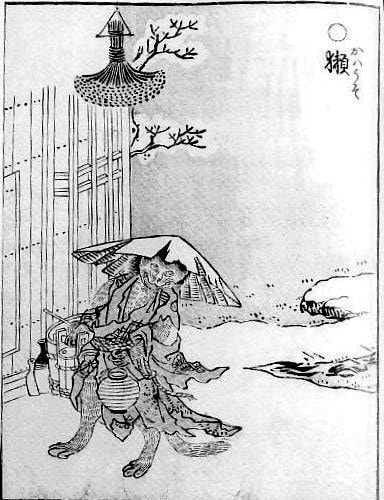
Both otter species have featured prominently in human cultures, though in different contexts. River otters appear in the mythologies and folklore of many Indigenous peoples across North America, often portrayed as clever tricksters or as symbols of joy and playfulness. They were traditionally trapped for their waterproof fur, which was valued for clothing. Today, river otters are popular attractions in zoos and wildlife rehabilitation centers, where their playful antics delight visitors. Sea otters hold special cultural significance for coastal Indigenous peoples of the North Pacific, particularly the Aleut, Ainu, and other native groups who incorporated sea otter imagery into their art, clothing, and spiritual practices. The near-extinction of sea otters during the fur trade devastated many of these cultures. In modern times, sea otters have become charismatic ambassadors for marine conservation, with their appealing appearance and tool-using behaviors making them favorites in public aquariums and viral nature videos. Their recovery efforts have sometimes created conflicts with shellfish industries, leading to complex management challenges that balance ecological benefits against economic interests.
While river otters and sea otters share a common ancestry and some superficial similarities, they represent fascinating examples of how evolution shapes species to thrive in different environments. River otters, with their versatile lifestyle bridging land and freshwater, contrast sharply with sea otters, who have become highly specialized marine mammals dependent entirely on ocean ecosystems. These differences extend beyond mere habitat preference to encompass profound adaptations in physiology, behavior, diet, and social structure. Both species face ongoing conservation challenges that reflect broader environmental issues, from watershed health to ocean ecosystem integrity. By understanding the unique characteristics and ecological importance of these charismatic mammals, we gain not only appreciation for their remarkable adaptations but also insight into the complex interconnections that sustain healthy ecosystems across diverse aquatic environments.
- The Coldest Town in America—And How People Survive There - August 9, 2025
- How Some Birds “Steal” Parenting Duties From Others - August 9, 2025
- 12 Deep-Sea Creatures You Won’t Believe Exist - August 9, 2025

